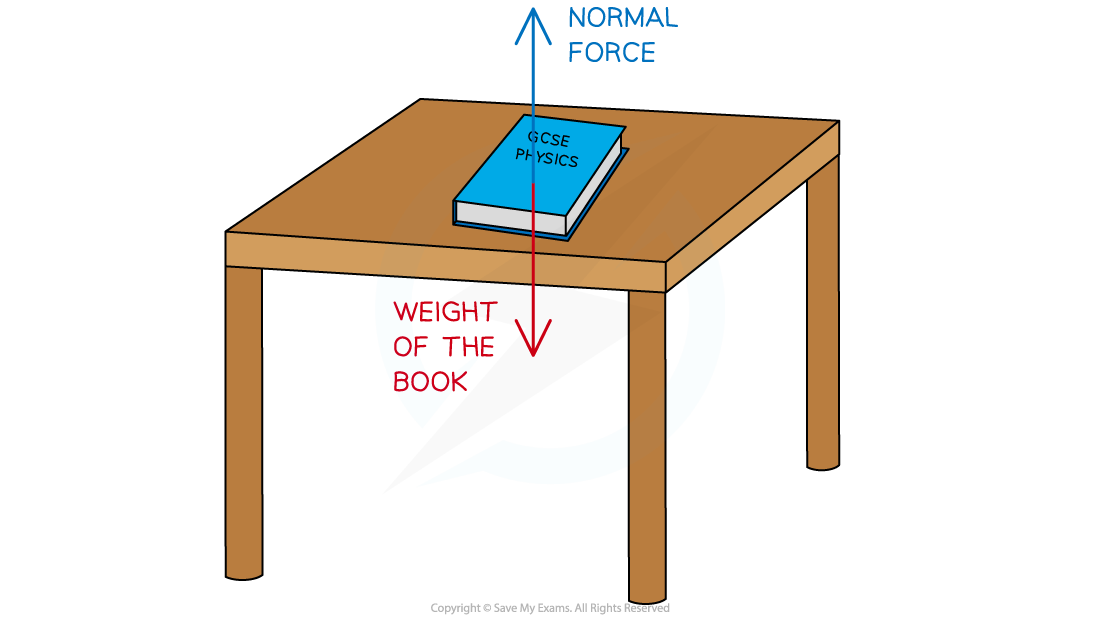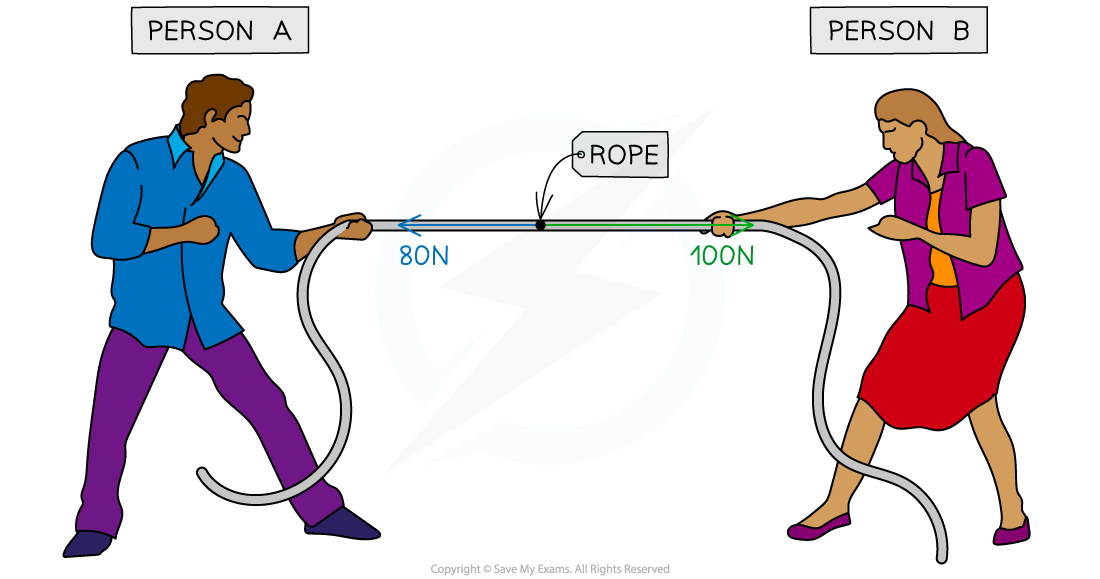Resultant Forces (AQA GCSE Combined Science: Trilogy) : Revision Note
Resultant Force
A resultant force is a single force that describes all of the forces operating on a body
When many forces are applied to an object they can be combined (added) to produce one final force which describes the combined action of all of the forces
This single resultant force determines:
The direction in which the object will move as a result of all of the forces
The magnitude of the final force experienced by the object
The resultant force is sometimes called the net force
Forces can combine to produce
Balanced forces
Unbalanced forces
Balanced forces mean that the forces have combined in such a way that they cancel each other out and no resultant force acts on the body
For example, the weight of a book on a desk is balanced by the normal force of the desk
As a result, no resultant force is experienced by the book, the book and the table are equal and balanced

A book resting on a table is an example of balanced forces
Unbalanced forces mean that the forces have combined in such a way that they do not cancel out completely and there is a resultant force on the object
For example, imagine two people playing a game of tug-of-war, working against each other on opposite sides of the rope
If person A pulls with 80 N to the left and person B pulls with 100 N to the right, these forces do not cancel each other out completely
Since person B pulled with more force than person A the forces will be unbalanced and the rope will experience a resultant force of 20 N to the right

A tug-of-war is an example of when forces can become unbalanced
Calculating Resultant Force
Resultant forces can be calculated by adding or subtracting all of the forces acting on the object
Forces working in opposite directions are subtracted from each other
Forces working in the same direction are added together
If the forces acting in opposite directions are equal in size, then there will be no resultant force – the forces are said to be balanced

Diagram showing the resultant forces on three different objects
Imagine the forces on the boxes as two people pushing on either side
In the first scenario, the two people are evenly matched - the box doesn't move
In the second scenario, the two people are pushing on the same side of the box, it moves to the right with their combined strength
In the third scenario, the two people are pushing against each other and are not evenly matched, so there is a resultant force to the left
Worked Example
Calculate the magnitude and direction of the resultant force in the diagram below.

Answer:
Step 1: Add up all of the forces directed to the right
4 N + 8 N = 12 N
Step 2: Subtract the forces on the right from the forces on the left
14 N – 12 N = 2 N
Step 3: Evaluate the direction of the resultant force
The force to the left is greater than the force to the right therefore the resultant force is directed to the left
Step 4: State the magnitude and direction of the resultant force
The resultant force is 2 N to the left
Examiner Tips and Tricks
Remember to always provide units for your answer and to state whether the force is to the left, to the right, or maybe up or down
Always provide your final answer as a description of the magnitude and the direction, for example:
Resultant Force = 4 N to the right
Always draw force diagrams for any forces question, because it is the fastest and most visual way to figure out what is going on in the scenario. Harder force questions contain multiple forces and may not include an image to help you, so even if there are no marks awarded for it, sketch a quick free-body force diagram (the object is represented as a dot and the force arrows are drawn on it), then label the forces with their names and values. This will help you to avoid mistakes and to avoid missing any forces. Remember that you may have calculated any missing values in previous parts of the question.

You've read 0 of your 5 free revision notes this week
Sign up now. It’s free!
Did this page help you?
